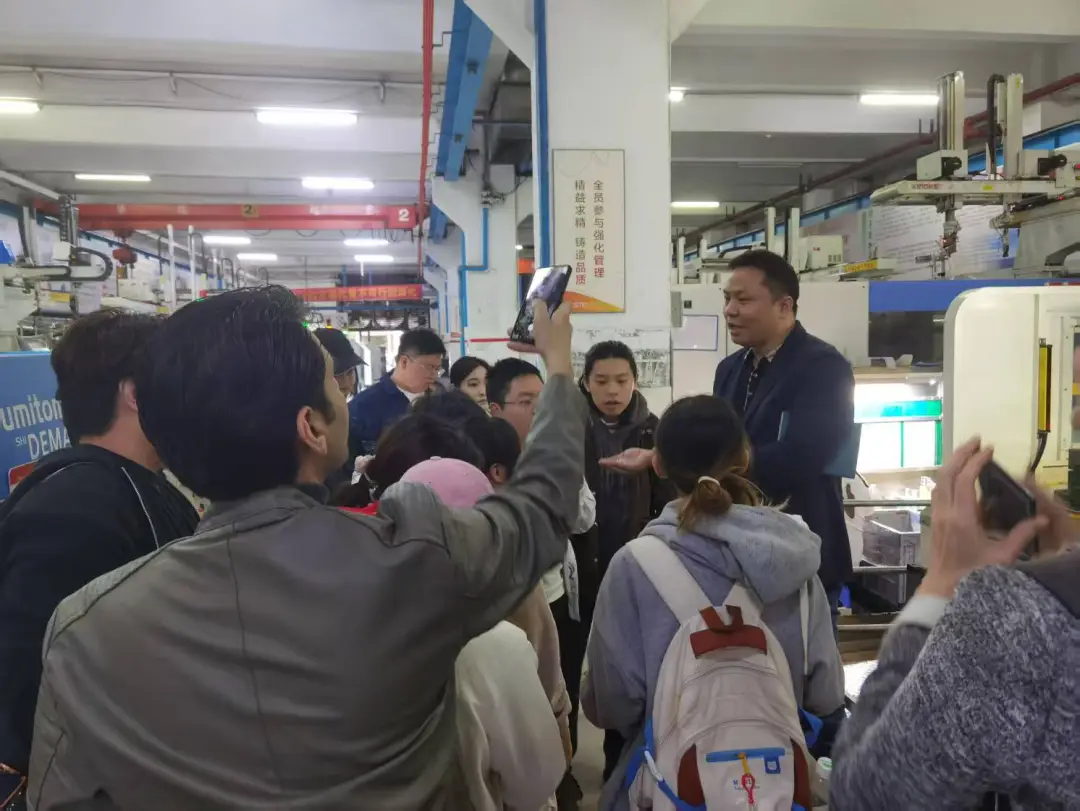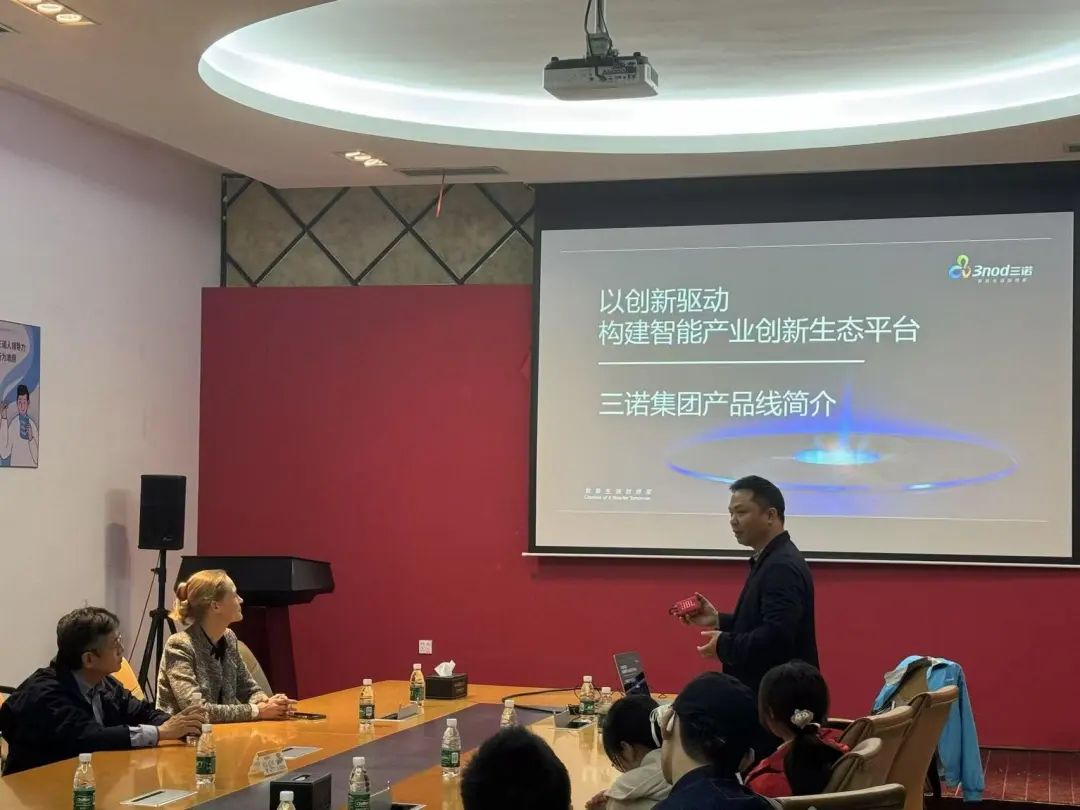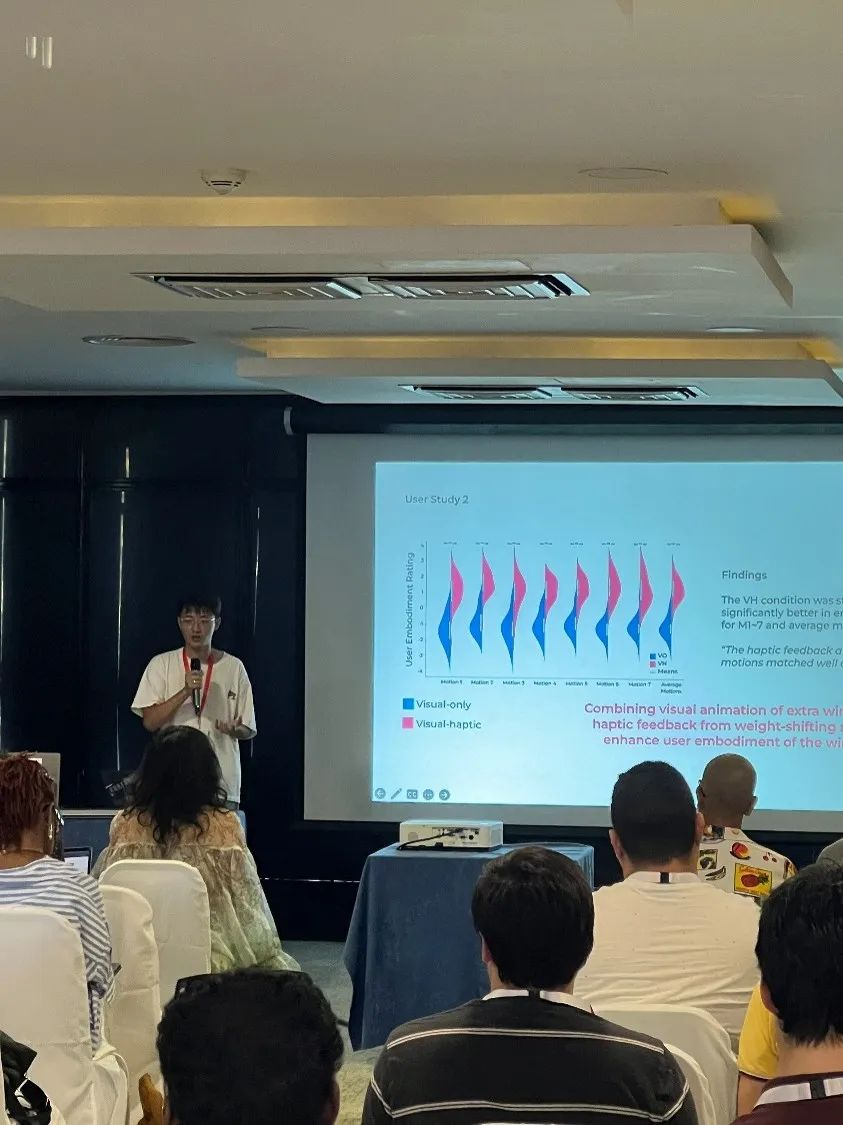Mar 23. 2025 - Latest News
Industrial Design Classes Moved into Industrial Workshops Covering the Entire Industrial Process
Against the backdrop of smart manufacturing reshaping the industrial landscape, in-depth industry-education integration has become the key to breaking through the bottleneck in cultivating innovative talents. A teaching team led by Professor Hao Liang and Professor He Jingzhi from the School of Design and Innovation at Southern University of Science and Technology (SUSTech) has focused on "industrial design-manufacturing integration" to explore innovative educational methods and concepts. On March 5th, the team led students majoring in Smart Product Design to visit the Shenzhen Smart Factory of 3nod Group. Adopting the model of "workshop as classroom", they deciphered the practical codes of the entire chain, from conceptual design, ID design, product design, product molding to mass production.

Figure 1: Group Photo of This Study Tour Activity
As part of the college’s studio teaching method, this "from creativity to industry" activity connected in-depth industry-academia-research interaction through three core modules. In the exchange and discussion session, professors, corporate engineers, and students focused on the development cases of smart home products, breaking down the entire process from user demand analysis, conceptual design to mass production optimization. They discussed market pain points and innovation breakthroughs through real project cases, helping students move beyond the classroom perspective to understand industrial logic. During the factory visit, teachers and students visited traditional manufacturing workshops, precision machining centers, and 3D printing innovation laboratories in sequence. They observed the process details of mold casting, CNC machining equipment with micron-level precision, and the practical application of additive manufacturing in 3D printing technology, gaining an intuitive understanding of the technological leap from "manufacturing" to "smart manufacturing". In the final exchange seminar, students actively raised questions regarding practical issues such as material selection, cost control, and sustainable design. Senior engineers from 3nod provided detailed answers based on industry trends and practical experience, and shared career development advice centered on "how design thinking empowers smart manufacturing". This practical journey integrating theoretical exploration and scenario-based learning has built a cognitive bridge for design students to connect directly with the cutting-edge of the industry.

Figure 2: Professors Hao Liang and He Jingzhi Discussing in the Smart Factory
According to student feedback, the visit allowed them to gain an in-depth understanding of the manufacturing process of injection molds, and the detailed explanations from engineers helped them grasp the technical details. Students stated that this close-up experience gave them a deeper understanding of how smart manufacturing reshapes the industrial pattern, especially regarding the operation of various links in the industrial chain and the close connection between design and production. Through the visit and discussions, students also gained a clearer understanding of how to use modern manufacturing technologies (such as precision machining and 3D printing) to improve the feasibility, precision, and sustainability of product design.

Figure 3: College Students Actively Communicating with the Person in Charge of the Smart Production Line
This industry-education integration study tour adopted a three-stage teaching model of "teaching-discussion-practice", aiming to break the cognitive barrier between academic theory and industrial practice. In the real manufacturing scenario, students deepened their understanding of the full life cycle of industrial design, solved core issues such as material technology and cost control through engineers’ practical experience, and gained career development insights at the intersection of design thinking and smart manufacturing.

Figure 4: Tripartite Exchange Seminar Among College Students, Professors, and Industry Experts
Background Introduction
Founded in 1996 and headquartered in Shenzhen, Shenzhen 3nod Group is a global technology enterprise centered on "smart life". Its business covers fields such as acoustic intelligence, smart terminals, smart homes, precision manufacturing, and new materials, with multiple R&D centers and manufacturing bases worldwide. In 2017, 3nod became a listed company in South Korea through mergers and acquisitions, realizing a transnational layout. Known for its innovation-driven development, it has been selected into the "Top 500 Chinese Manufacturing Enterprises".
The smart precision manufacturing product line of Shenzhen 3nod Group focuses on high precision, automation, and digitalization, covering four core areas. In the consumer electronics field, it provides ODM services for acoustic products (such as smart speakers and TWS earphones) to international brands like Harman and LG, with a focus on acoustic performance and intelligent interaction. Smart home devices integrate IoT technology, covering interconnected scenarios such as smart lighting and security. In industrial equipment, it independently develops automated production lines and precision molds with micron-level precision, which are widely used in consumer electronics and medical devices. Meanwhile, it optimizes new materials by combining metal/plastic precision processing technology to enhance product lightweight properties and durability.

Jan 6. 2022 - Latest News

Sep 15. 2023 - Latest News

Jul 22. 2025 - Latest News